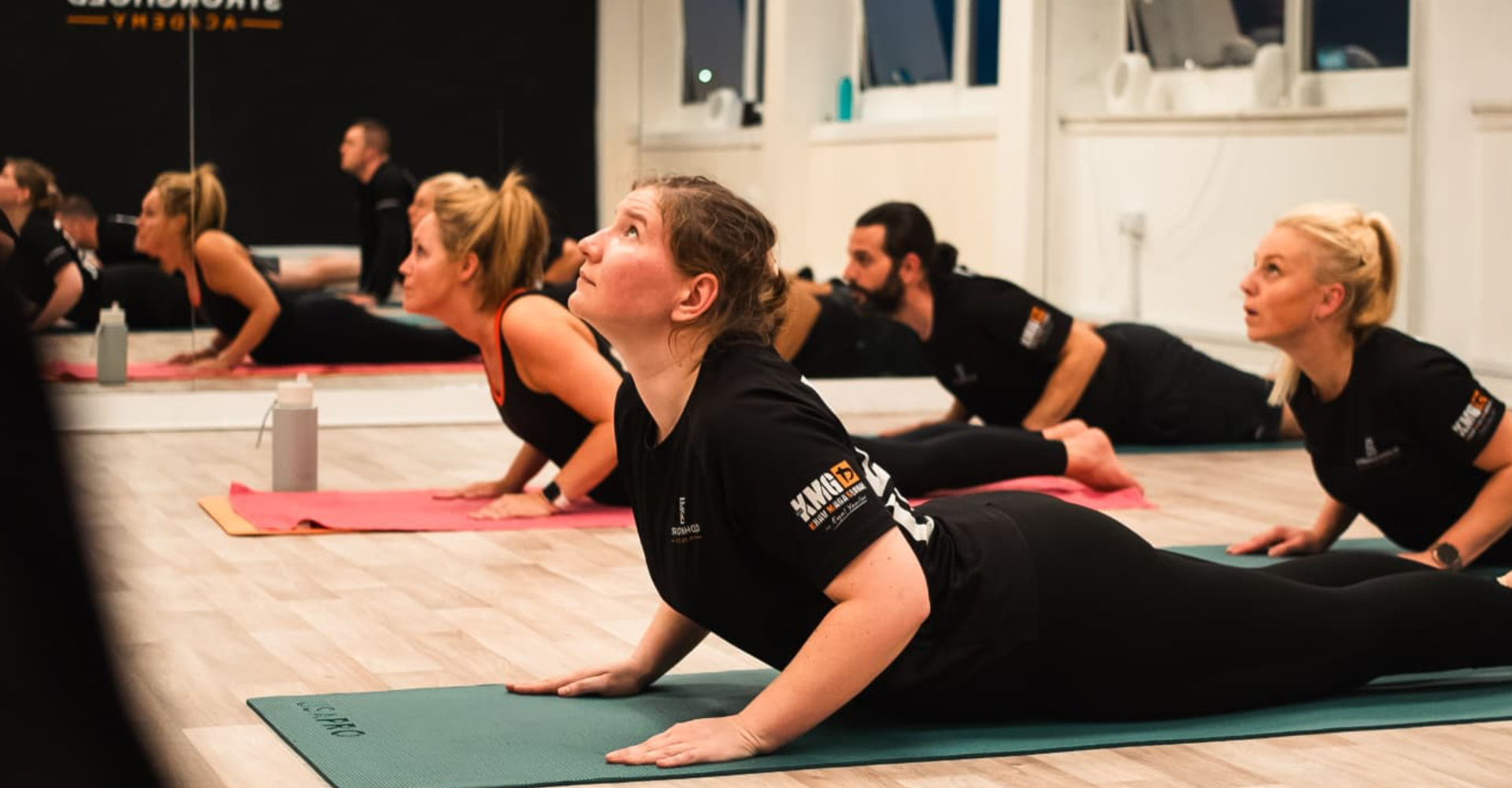
YIN YOGA
What is Yin Yoga?
Yin Yoga is a slow, science-based style of yoga that targets your body’s deep connective tissues — like fascia, ligaments, joints, and tendons — through long-held, passive stretches. It’s not about flow, sweating, or strength. Yin is about stillness, time under tension, and giving your body space to open without force.
You’ll typically hold each posture for 2–5 minutes, using props like blocks and bolsters to support the body while gravity does the work. The result? Deep tissue hydration, improved joint mobility, better flexibility, and a nervous system that finally gets a break.
At Stronghold Academy, we teach Yin in a way that’s simple, practical, and rooted in anatomy and biomechanics. No spiritual jargon, no mystical talk — just focused breath, conscious stillness, and long-term physical benefits.
What Are the Benefits?
Yin is the antidote to your fast-paced, overtrained, overstimulated life. Whether you’re stiff from lifting weights, tight from running, sore from martial arts, or just carrying tension from daily stress — Yin helps you release what’s stuck.
Physical benefits:
● Targets tight hips, hamstrings, glutes, and spine
● Increases passive range of motion in joints
● Supports recovery from strength or impact training
● Improves posture and functional movement
● Reduces muscle guarding and compensatory patterns
Mental and nervous system benefits:
● Triggers the parasympathetic nervous system (rest & digest)
● Helps reduce anxiety, tension, and overthinking
● Trains your ability to sit with discomfort (mentally and physically)
● Builds focus, patience, and stress resilience
● A perfect active recovery tool for high-performing people
Unlike most modern yoga styles, Yin is not about the “burn.” It’s about releasing effort and letting go — something most of us don’t get enough of.
Who Is It For?
Everyone — especially people who think they “can’t do yoga.”
Yin is for:
● Strength athletes, lifters, and runners
● Martial artists who need mobility without losing power
● Desk workers dealing with hip or back pain
● Stressed-out professionals who need nervous system relief
● Total beginners who want a non-intimidating entry point
● Yogis who want to complement their Vinyasa or Bikram practice
If your body feels stiff, overworked, or wound up — Yin is for you. And if your mind is racing 24/7, it’s definitely for you.
Not recommended for pregnant women.
What Should I Bring to My First Class?
Yin classes are low-effort, but there are a few things you’ll want to make your practice more comfortable.
Bring:
● A yoga mat (any kind is fine or you can borrow from the studio)
● Warm layers — hoodie, socks.
● Water bottle
● An open mind and the willingness to be still
We provide all props (blocks, bolsters, straps), but you’re welcome to bring your own. You do not need to be flexible. You do not need to “do it right.” The goal is to be supported, still, and present.
What to Expect in Class
Each Yin class runs around 45–60 minutes and typically includes 8–12 postures.
You’ll start lying down or seated, settle into your breath, and move slowly through a sequence of long holds designed to target specific areas — often hips, spine, shoulders, or hamstrings. Each pose is supported with props and held in stillness.
Here’s a typical format:
- Opening Breath & Grounding
Calm the nervous system, focus the breath. - Main Sequence
A slow progression of seated and lying postures — think Butterfly, Shoelace, Dragon, Caterpillar, Supine Twists. - Closing Integration
A brief Savasana or final rest to let the work settle into your body.
You’ll leave class feeling quieter, looser, and recharged — like you just hit the reset button on your system.
Why Yin Yoga at Stronghold?
Because we teach it how it should be taught — grounded, real, and effective.
Our Yin classes aren’t spiritual lectures or abstract metaphors. They’re movement meets science meets practical recovery. Whether you’re here to complement your training, improve your mobility, or just chill out in a quiet room — we’ve got you.
We coach you on:
● How to use props properly
● Where you should (and shouldn’t) feel the stretch
● How to breathe through discomfort safely
● Why stillness is useful and how to stay present
No pressure. Just long, deep holds and a space to unwind.
Common Questions
Do I need experience to do Yin?
No. Yin is accessible for complete beginners and advanced athletes alike. You’ll be guided every step of the way.
Is it like stretching?
Sort of — but it’s more targeted and passive. You’re working with connective tissue and joint range of motion, not muscles.
Will it feel intense?
Yes — but not in a sweaty way. Yin challenges your patience, breath control, and tolerance for stillness. It’s subtle, but powerful.
What if I have injuries?
Let your teacher know before class. Yin can often be adapted to support recovery and safe movement around injuries.
our
timetable
martial art
journey
our
timetable
martial art
journey